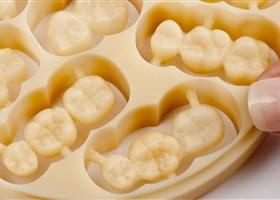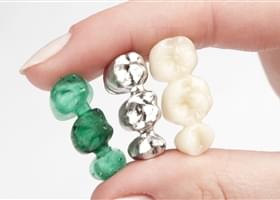



The dental branch of the fixed prosthesis on a natural tooth which refers to the reconstruction of teeth compromised by damage of various kinds. Starting from a provisional element, whose purpose is to temporarily replace the damaged tooth, and carefully following the medical prescription, the definitive dental element is reconstructed and made functional.
There are different types of permanent fixed prostheses: bridges, single crowns, veneers or inlays. The final purpose is always to provide a substitute, indefinitely, for the damaged tooth.
These devices can be made out of different materials with the help of different technologies starting from the supporting structure up to the final aesthetic coating.
The Structure
About ten years ago the structures of the medical devices of the fixed prosthesis were almost exclusively produced with the lost wax casting technique. Even though this technique is still in use, over time we encountered huge investments and different production obstacles in search of a better final quality of the product.
Today we are able to manufacture such structures through traditional transformation techniques:
But we also rely on CAD-CAM systems:
. The materials used for these structures are of various types. In the last years the gold alloys they have been heavily replaced by the cobalt chrome alloy (Cr-Co) which, while meeting certain mechanical requirements, reduces costs and allows to be worked through CAD-CAM systems that makes an economic difference to both dentists and patients alike.
The CAD-CAM allows to use other materials in the production of structures, i.e. the Zirconium, a material which can be worked on only with this technology, has excellent structural characteristics and a basic white color that facilitates the manufacturing of a good-finished final aesthetic product.
The Lithium Disilicate is always white in color and is used for the production of small bridges and single teeth, usually transformed into a lost wax melting system and is also suitable for inlays and veneers. This material also has very aesthetic and durable characteristics which allow a wide aesthetic customization.
The aesthetic coating
The final coating, regardless of the material used for the structure, is always made with dental ceramics excluding only coatings for provisional prostheses, made of a composite or acrylic material.
The latest generation of dental ceramics, with a wide range of colours and types, allows dentists to produce high quality teeth with excellent guarantees of durability.
--
The materials that we have listed are obviously the most used ones. Our responsibility as manufactures is always to evaluate each individual case and inform the doctor or clinic if these materials cannot be used while proving at the same time the client with solutions and viable alternatives.
